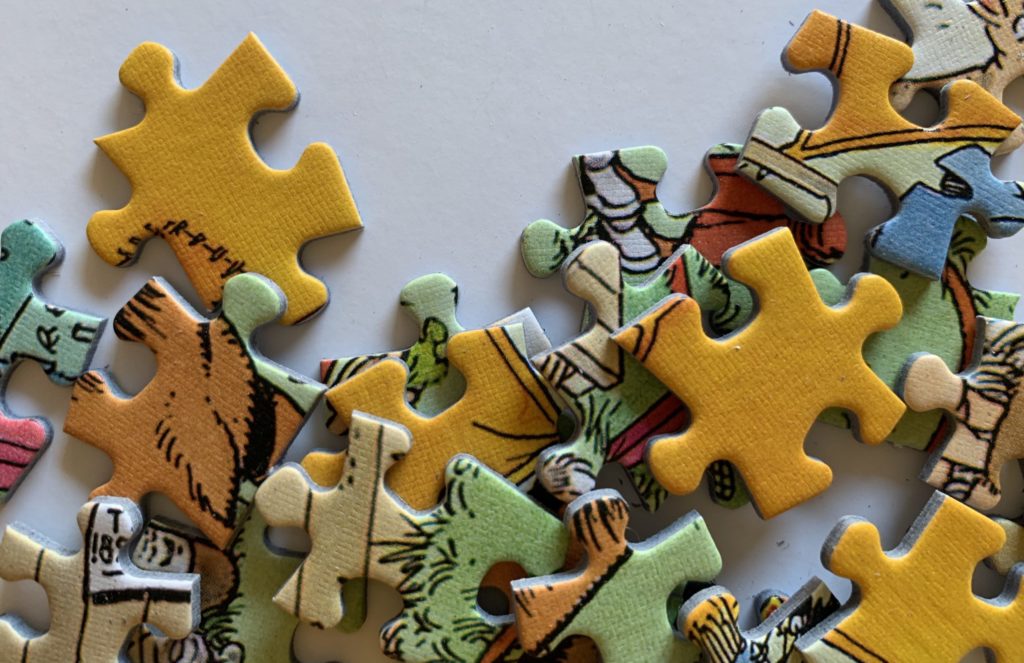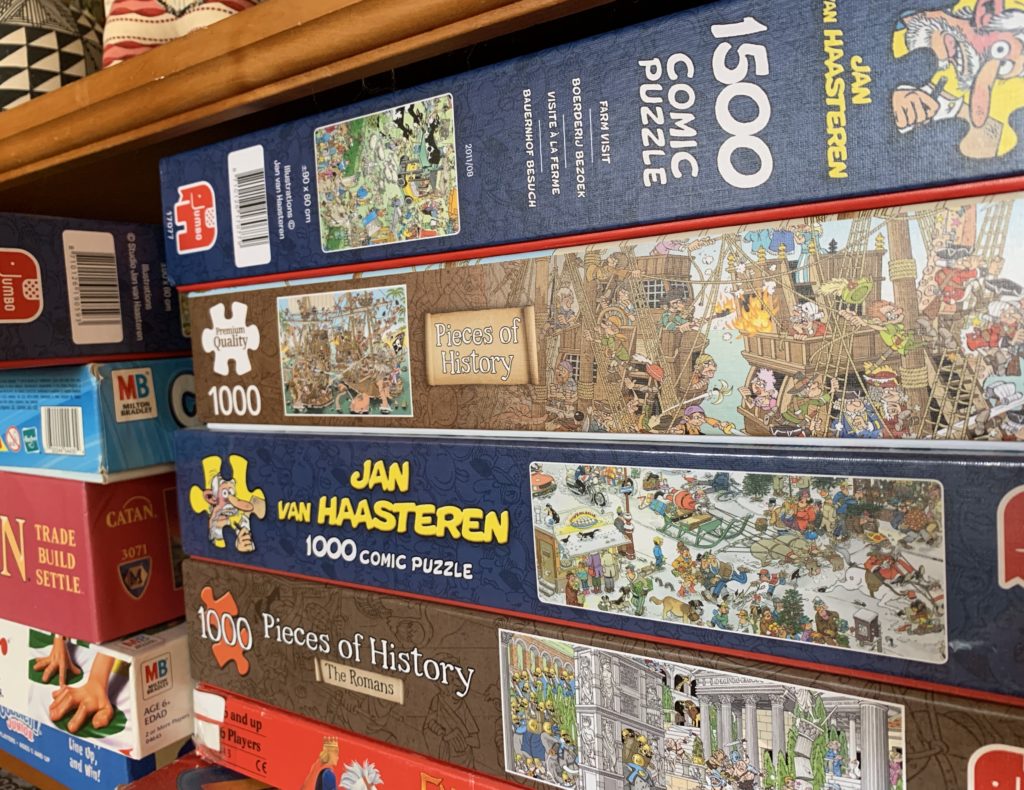
My family is really into puzzles—especially this time of year. Puzzles = the Holidays for the Torrini family. We have been known to eat holiday dinners sitting around the coffee table when the dining table was still hosting the guest of honor—our 1500 piece puzzle by our favorite puzzle artist.
We often invite friends over to join us, which has led to some fascinating observations about people and collaborative projects—along with some unexpected wisdom about life and work.
What can you learn from a puzzle?
Not only do we give our holiday puzzles the place of honor at (or rather on) our dining table, we also add the twist of always doing the puzzle without looking at the box… 🤣 Yes, its true! One of our very first puzzles years ago didn’t show the final image on the box and then we realized it was more fun that way. It turns out that doing a puzzle “blind” like this is actually a lot like life—we can see edges, snippets, clues, hints, patterns, even chunks and whole sections, but we don’t actually know what we’re building ….until we’re done!
The Big Picture
As soon as we’ve completed a puzzle, something fascinating happens. This intricate collection of details, which we have been pouring over for days, suddenly transforms into—quite literally—the “big picture”! All sorts of things become apparent that we simply could not see when we were focused on the details—even though were staring right at them!
The Devil is in the Details
As we get towards the final stages of a puzzle, we are usually left with lots of non-descript pieces that had been incomprehensible to us earlier. Strangely, they start to make sense and placing them becomes both interesting and do-able—just like a project phase that is too far in the future to be sorted out until other foundational parts have fallen into place.
Not surprisingly, if we ever repeat a puzzle from a previous year, we are faster at it than before. We know what we are building this time, including the pitfalls from the last go-around. However, there are always sections that someone else did the last time that are new to me, and in this detail work, having a sense of the big picture is not nearly as useful as knowing how the details all fit together! I am not much faster on these sections than I was the first time—a humbling reminder that to really get a job done we need both the “weeds” and the mountain-top view.
Work Styles Revealed
One of the beauties of puzzles is that they are a non-competitive group activity that accommodates everyone’s work style—at the same time—towards a common goal.
I am the master sorter and scanner. I dive into a puzzle by gathering little piles of similarly patterned or colored pieces to be investigated later. My husband goes straight for all the edge pieces and then works inward. One of our friends focuses on a single area of the puzzle, doggedly searching for just those pieces until it is complete, while I am constantly scanning the whole table for clues and patterns.
When my husband’s engineer friend helped us for the first time, I was astounded to see him “brute force” an expanse of blue sky by methodically testing every possible location using only the shape of the piece. Focused as I had been on the pattern of the images, the pattern of the pieces themselves had been all but invisible to me! But in the end everyone’s contribution and work style led to both a completed puzzle and a fun experience for us all.
Happy Holidays! Wishing you have as much fun and good times with your beloveds as we have with ours and our puzzles.

